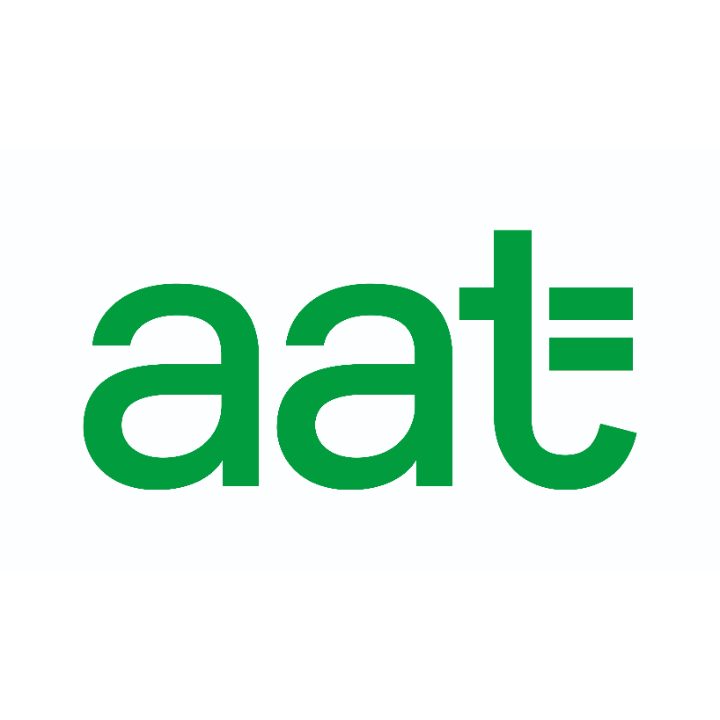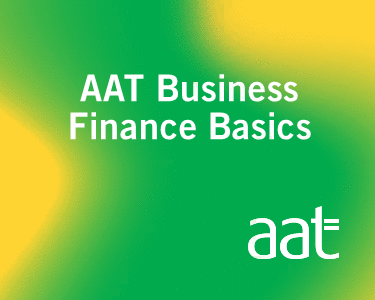
What is a car dealership?
Selling new and/or used cars to customers, dealerships typically work with a particular brand (or multiple brands) of vehicles and are authorised by the manufacturers to sell their products. Usually offering a showroom where customers can view and test drive vehicles, as well as a service department where customers can have their cars serviced and repaired, many dealerships also offer financing and insurance options, as well as part exchange services for customers looking to sell their existing vehicles.
Car dealerships play an important role in the UK’s automotive industry, providing consumers with a convenient and reliable way to purchase cars, and supporting the local economy through job creation and tax revenue.
However – as with any new business – careful planning and a good knowledge of the industry plays a crucial role in your startup’s success.
Here are some areas to consider before revving up your entrepreneurial engine…
Research the market and identify your niche
A crucial stage before starting any business is to conduct thorough research to help you understand the current market conditions, the competition and the demand. In the case of starting a car dealership, you should research the types of cars that are in demand in your area, as well as the demographics of your target market. You also need to be aware of all the impending changes that may impact your sales…
-
Electric cars
The UK car industry is shifting towards electric vehicles (EVs) as the government aims to phase out petrol and diesel cars by 2030. Many car manufacturers are investing heavily in EV technology and developing new models to meet this demand. While the 2030 electric switchover may be a few years away, London’s Ultra Low Emission Zone (ULEZ) is already here. Clean air zones are also in operation in and around the UK’s major towns and cities, meaning gas guzzlers with high emission levels may not be the easiest cars to sell. You’ll need to take this into consideration when deciding on stock to accommodate this increasing demand for zero or low emission cars, as this trend is expected to continue as more people become environmentally conscious and look for more sustainable transport options.
This demand is being supported further by the government via a number of initiatives to ensure there are sufficient charging points available for electric vehicles. There has also been significant private sector investment in electric car charging infrastructure in the UK. Companies such as BP, Shell, and Tesco have all invested in charging networks, and there are now over 23,000 public charging points available across the country.
-
Supply chain disruption
The COVID-19 pandemic has disrupted the supply chain of the UK car industry, causing shortages of essential components and leading to production delays.
In fact, sales of used cars slipped by 8.5% in the UK in 2022, despite huge demand for second-hand motors, new figures show. The Society of Motor Manufacturers and Traders (SMMT) said just 6.9 million vehicles changed hands in 2022, down from 7.5million during the previous 12 months.
Restricted production of new vehicles caused by part supply issues in the hangover from the pandemic has seen record demand for used cars, which in turn has pushed prices to record levels. But the trade body said these same new car manufacturing constraints had a knock-on effect for used motor dealers who were unable to restock their showrooms and forecourts with vehicles.
-
Brexit
The UK’s departure from the EU has had an impact on the car industry. Some car manufacturers have moved production out of the UK due to uncertainty surrounding trade agreements, while others have invested in new plants in the country to take advantage of its new trading status.
-
Digitisation
The industry is also undergoing digitisation, with new technologies such as self-driving cars and connected vehicles being developed and tested. This is expected to lead to new business models and opportunities for growth.
-
Demographics
In terms of demographics, the average age of a new car buyer in the UK is 54. When it comes to the younger generation, a recent report by GoCompare found that the younger a driver is, the less likely they are to buy a new car due to high depreciation values and the impact of the cost of living crisis. In total, 75% of Generation Z drivers said they only buy used cars, while 54% of millennials and 60% of Gen X drivers also tend to opt for vehicles that have been pre-owned.
It’s also important to note that fewer and fewer young adults are learning to drive. In April 2021, The Guardian broke the story that the number of young adults with a full driving licence had fallen to a recent low. Just 2.97 million people aged 16-to-25 in Great Britain held a full licence, down from 3.32 million in March 2020. In fact, there are 18% fewer teenagers with a licence than there were ten years ago. This is partly a result of the prohibition of driving tests and lessons during the pandemic. Additional reasons include rising costs, environmental concerns, changes in lifestyle and work patterns, alternatives such as Uber, and even cheap supermarket delivery, giving young people a convenient way to use other vehicles without needing to own their own.
-
Bestsellers
According to Auto Express motoring magazine, the bestselling new car models in the UK so far in 2023 are:
● Vauxhall Corsa
● Volkswagen T-Roc
● Nissan Qashqai
● MG HS
● Ford Puma
● Hyundai Tucson
● Kia Niro
● Kia Sportage
● Vauxhall Mokka
● Ford Fiesta -
Online demand
Many new car dealerships are starting to operate online due to the increase in online shopping and customer convenience.
While it is possible to start a car dealership online, it’s important to ensure that you comply with all the relevant legal regulations (see Section 3) and have the necessary infrastructure and processes in place to provide a high-quality service to your customers.
Other considerations more specific to an online dealership include a user and device-friendly website (quality photos are key!), secure payment processing, delivery logistics and customer service.
-
Keep a close eye on the industry
Changes are happening in the automotive industry all the time, so it’s important to keep a close eye on your market moving forward, not just at the planning stage. If you don’t monitor your market, you may find that your offering misses the mark, and that your customers shop elsewhere.
The UK car industry is changing rapidly in response to a range of internal and external factors, and is likely to continue evolving in the years ahead. All of these factors need to be considered when writing a business plan…
Write a business plan
Your business plan is the roadmap you need in place before navigating your new venture. It’s an essential step for any entrepreneur that wants to start and grow a business. This document helps you to clarify your business idea, set clear goals and help you plan for the future by anticipating challenges and opportunities. It will help you to secure financing by convincing investors or lenders that your business is viable and has the potential for success. It also has the potential to attract partners and employees who are aligned with your vision and values.
It’s worthwhile working with an accountant at this crucial stage, as they can advise in a number of areas when planning your business such as financial forecasting and the best structure for your business e.g. sole trader, limited company, etc.
To help you get started, download our free UK business plan template below.
Download: Please login or register to get your download.
Get to grips with legal regulations
In the UK, there are several legal regulations that you must comply with when opening a car dealership. Examples include:
-
Dealer's licence
You will need to obtain a dealer’s licence from the Driver and Vehicle Licensing Agency (DVLA) before you can legally sell cars in the UK.
-
Business registration
You must register your business with Companies House and HM Revenue & Customs (HMRC) and comply with all relevant tax and accounting regulations. (An accountant can help you navigate this to ensure compliance.)
-
Premises
You must have suitable premises for your dealership, which meets all relevant health and safety and planning regulations.
-
Consumer protection
You must comply with all relevant consumer protection regulations, including the Consumer Rights Act 2015, which sets out the rights of consumers when buying goods and services.
-
Vehicle history checks
You must carry out vehicle history checks on all cars you sell, to ensure they are not stolen, written off, or have outstanding finance.
-
Advertising
You must comply with advertising regulations, including the Advertising Standards Authority’s rules on advertising of cars.
-
Data protection
You must comply with data protection regulations, including the General Data Protection Regulation (GDPR), when handling personal information of customers.
It’s important to seek legal advice and guidance to ensure that you comply with all relevant laws and regulations.
Decide on your car dealership services
Will your new business offer a range of different services alongside car sales? Depending on the facilities you have, you might want to consider additional business activities that could generate extra income. Here are some common examples:
-
Car servicing and maintenance
Many dealerships have their own service and repair facilities, allowing them to offer customers regular servicing, maintenance, and repairs for their vehicles.
-
Financing options
Car dealerships can provide financing options to customers who wish to purchase a car on credit. This may include hire purchase agreements, personal contract purchases, or personal loans.
-
Insurance
Some dealerships may offer car insurance to customers, either directly or through partnerships with insurance providers.
-
Extended warranties
Dealerships can offer extended warranties to customers, providing additional coverage beyond the manufacturer’s warranty for a certain period of time.
-
Vehicle rental
Some dealerships offer rental services, allowing customers to rent a car for a short period of time, such as for a weekend or while their own car is being serviced.
-
Part exchanges
Dealerships may offer trade-in services, allowing customers to exchange their old car for a new one or receive credit towards the purchase of a new car.
-
Parts and accessories
Many dealerships sell car parts and accessories, allowing customers to purchase genuine replacement parts or personalise their vehicles with aftermarket accessories.
-
Customer loyalty programs
Some dealerships may offer loyalty programs that reward customers for their continued business, such as discounts on future purchases or free servicing appointments.
-
Delivery services
Some dealerships may offer delivery services, allowing customers to have their new car delivered directly to their home or office.
Making your dealership a one-stop-shop for all of your customers’ automotive needs is a smart way to increase your business’s revenue streams and prevent customers from considering your competitors.
Plan your pricing
There are lots of factors that could affect the value of a car, such as:
- Age
- Condition
- Mileage
- Brand and model
- Features and options
- Supply and demand
- History
- Market conditions
Sites such as Autotrader are a great place to gauge guide prices for cars of a similar spec. Once you have a ballpark figure, you can offer your customers a fair price, while keeping your profit margins. Having a good understanding of your local market is also crucial, so you know how much potential customers are willing – and able – to pay.
Another area to factor into your purchasing and pricing plan is the weather! Convertibles tend to sell for less in the winter – if you’re looking to make a profit, think about purchasing cars at a time when they’re good value, to make a profit in the summer months (and vice versa). Cheap runarounds are also popular in the summer, as more students learn to drive in the summer holidays. When supply outweighs demand, prices increase – keep this in mind when considering how to price products.
Pricing structure
Your pricing structure can vary depending on a number of factors, such as your business model, the type of cars being sold, and market demand. Here are some common pricing strategies:
-
Manufacturer's Recommended Retail Price (RRP)
Many car dealerships will sell cars at the manufacturer’s recommended retail price (RRP), which is the price suggested by the car manufacturer. This price is often non-negotiable, and customers will need to pay the full amount unless there are promotions or incentives available.
-
Negotiated pricing
Some car dealerships allow customers to negotiate the price of the car. This may involve haggling over the price, discussing the value of a part exchange, or negotiating financing terms. If this is going to be the case, you may wish to invest in some negotiation training for you and your staff.
-
Discounted pricing
Car dealerships may offer discounts on certain models, particularly those that are not selling as well or are being phased out. These discounts may be seasonal, promotional, or offered for specific demographics (such as military personnel, students, or first-time car buyers).
-
Bundling pricing
Dealerships may bundle the cost of additional services or accessories into the price of the car. For example, a dealership may offer a “package deal” that includes servicing, a warranty, and a set of floor mats for a slightly higher price than the base model.
-
Auction pricing
Some dealerships may acquire used cars through auctions and sell them at a higher price to customers. The dealership will factor in the cost of acquiring the car, the cost of refurbishing or repairing it, and any additional services before setting the selling price.
-
Part exchange pricing
While trade price guides offer useful information when deciding how much you will offer customers who want to part exchange their old vehicle, also consider what the overall ‘price to change’ is for the customer, taking into account both the part exchange allowance and the retail price of the new car. How much money will you be able to sell the part exchange vehicle for? Do you think the vehicle would be an easy sell? Does it need much work before it can be sold? Can you sell it yourself, or will you sell it on to another trader or through an auction? Ensure your position is well informed before discussing figures with your customers – while some might be open to haggling, others might simply walk away if your offer is too low. Financial admin can get murky when part exchanging, so seek advice from a financial advisor to ensure you’re being compliant in areas such as cash flow and VAT record keeping.
-
Your Pricing Policy
Decide on a general pricing policy and stick to it as closely as possible. This will help you plan the financial side of your business better e.g. your target markup, whether you’ll stick to book prices or aim to undercut these. Or does the quality of your service and the location of your sales site justify prices that are higher than book prices?
Decide on your policy for trade sales of part exchanged vehicles to other dealers. Will you add a small percentage, or agree to pass them on at cost? Also have a think about pricing your other services such as repairs and valet. Work out the cost of providing each service, and the amount of profit you need to earn to make it worthwhile.
An accountant can help with your financial strategy.
Choose a location
Once you have conducted market research, you will need to choose a location for your dealership. This will depend on a number of factors, such as the availability of suitable commercial property, the size of your target market, and the competition in the area.
According to recent statistics, the South East and London are the regions with the highest number of car dealerships in the UK, with 20% and 17% of all dealerships located in these areas, respectively. However, there are opportunities for new dealerships in other regions, such as the North West, which has seen an increase in new car registrations in recent years.
How much does it cost to start a car dealership uk
The cost of starting a car dealership in the UK can vary widely depending on several factors, including the location, size, and type of dealership you want to establish. Here are some of the main expenses to consider:
-
Property: Consider starting with a smaller and more affordable property. Look for locations in areas with lower rental or purchase prices.
-
Inventory: Begin with a smaller inventory of vehicles, focusing on popular and affordable models. Consider partnering with local wholesalers or auctions to acquire vehicles at a lower cost.
-
Licensing and permits: While there will still be licensing and permit costs involved, they may be relatively lower for a small-scale dealership. Research the specific requirements in your area and budget accordingly.
-
Insurance: Seek out competitive insurance quotes and compare coverage options to find the most cost-effective solution for your dealership.
-
Equipment and infrastructure: Opt for essential equipment and infrastructure initially, and consider buying used or refurbished items to save money. Prioritise what you truly need to start the business and expand gradually.
-
Marketing and advertising: Focus on cost-effective marketing strategies such as targeted online advertising, social media marketing, and local promotions. Leverage your local connections and community networks to spread the word about your dealership.
-
Staffing: In the beginning, you may be able to handle multiple roles yourself or with a small team. As the business grows, gradually hire additional staff as needed.
While the overall costs will vary depending on your specific circumstances, starting a small car dealership with local aspirations could potentially require an initial investment ranging from tens of thousands to a few hundred thousand pounds. It’s essential to conduct thorough market research and create a detailed business plan to estimate costs accurately and secure appropriate financing if needed. Consulting with a business advisor or accountant would also be beneficial to help you navigate the financial aspects of your startup.
This may involve applying for a business loan from a bank or other financial institution or seeking investment from private investors. It is important to have a solid business plan and financial projections in place in order to convince lenders or investors to support your venture.
Obtain necessary licences, permits and insurance
In order to operate a car dealership, you will need to obtain a number of licences and permits. Examples include:
- A motor trader licence. This is issued by the Driver and Vehicle Standards Agency (DVSA) and allows you to buy, sell or exchange vehicles for profit.
- A premises licence: This is issued by the local council and allows you to use the premises for the sale of vehicles.
- Trade licence plates allow you and others to drive cars you’re buying, selling or trading. They are one of the most crucial legal requirements for your business as you will need them to offer test drives to potential customers. Trade licence plates are valid for either six or 12 months and should be displayed prominently when anyone is driving the vehicle. You should keep on top of your trade licence plates and ensure they are renewed in good time.
- FCA approval. If you plan to offer finance to customers utilising your used car dealership, you’ll need FCA (Financial Conduct Authority) approval. Financing can open up your business to a broader range of customers, making your services more affordable. It is vital to understand the legal requirements of offering finance and how to get and keep FCA approval.
Motor trade insurance
Motor trade insurance includes a range of policies and provisions that allow you and your staff to drive cars owned by your business and customers’ cars. It will cover the event of various risk factors. Examples include:
- Road risk – covers you to drive non-owned vehicles, including customers’ cars or motorcycles and those you’re buying or selling.
- Stock cover – protects your stock, equipment, and machinery against risks of damage, theft, and loss.
- Premises cover – insures your business premises against detrimental risks, including theft, flooding, fire, and vandalism, as well as business goods, such as tools, office equipment, and other essential items.
- Public liability cover – covers fees associated with claims from customers, such as accidents or damage to their property while on your business premises.
- Employers’ liability cover – like public liability protection, this covers compensation and claim fees if an employee is injured while at work.
Consumer Rights obligations
Used car dealerships must comply with the Customer Rights Act (CRA) when selling cars to customers. This includes a range of obligations that you behave in a fair and ethical manner when selling a vehicle. One of the key requirements is that the vehicle is of ‘satisfactory quality’ based on a reasonable person’s understanding of the term.
This can include factors such as the value, age, history and safety of the vehicle. It should also be fit for purpose, meaning the vehicle should run and have no major defects. You must also provide an accurate and fair description of the vehicle, and any features mentioned in any advertising materials should be accurate and working correctly.
Source vehicles and build a network of suppliers
Once you have obtained the necessary licences, permits, and insurance you will need to source vehicles to sell in your dealership. This may involve purchasing new or used vehicles from manufacturers, wholesalers, or private sellers.
Building relationships with suppliers can also help you negotiate better prices and secure more favorable financing options. In addition to vehicles, you will also need to source parts and accessories, as well as services such as detailing, repairs, and maintenance. There’s also a lot of dealer-only online auctions for buying and selling cars, which are a good way to get rid of part-exchange cars.
- Read more: How to find suppliers
Develop a marketing strategy
In order to attract customers to your dealership, you will need to develop a comprehensive business marketing strategy. This may involve traditional advertising methods such as print ads, as well as online marketing strategies such as social media, email marketing, search engine marketing and pay-per-click advertising. Consider local marketing opportunities as your business is likely to be heavily dependent on trade in your area.
According to recent statistics, the most popular online channels for car buyers in the UK are Auto Trader, Gumtree, and eBay Motors. It is worth considering advertising your dealership on these platforms, as well as creating a website and social media profiles to showcase your inventory and services.
In addition to digital marketing, you may also want to consider hosting events such as test drive days or car shows, as well as partnering with local businesses and organisations to increase your visibility and reach.
Hire and train staff
Once your dealership is up and running, you will need to hire and train staff to help you manage and grow your business. This may include salespeople, mechanics, and administrative staff. The costs of employing staff can be significant so make sure it’s factored into your financial planning.
It is important to ensure that your staff is knowledgeable about the products and services you offer, as well having strong customer service skills and sales techniques. Offering regular training and incentives can also help to motivate your staff and improve their performance.
If you’re looking to avoid making any false starts or u-turns in the early stages of your business, ensure your business plan is well researched and agile. Seek financial and legal advice to ensure optimum operation and compliance. Take regular pit stops to analyse your results and reflect on any changes in the industry to ensure your business is as future-proofed as it can be. Team it with some passion and hard work and you’ll be on track for a podium finish.
*Please note the above information is not an exhaustive list and does not constitute any form of legal advice.
Share this content

Brought to you by:
AAT Business Finance Basics
AAT Business Finance Basics are a series of online e-learning courses covering the core financial skills every business needs. They draw from AAT’s world-leading qualifications and will quickly build your knowledge on key topics including bookkeeping, budgeting and cash flow.
Visit partner's website







